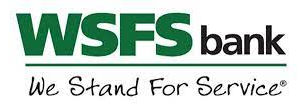A Big Tax Write-Off for Small Business: What Is IRS Section 179?

Today’s economy is creating challenges for many small businesses. Many things seem to be changing quickly. But one important thing has not changed: Section 179 of the IRS Tax Code. When small businesses use financing to reinvest in their business by purchasing certain categories of equipment or software, they can take advantage of a powerful tax write-off. Based on a new WSFS Bank Small Business Trends study’s findings, small businesses are considering this powerful tax write-off, as 45 percent of those surveyed are considering a loan to finance equipment.
If you are considering a loan to finance equipment for your small business, here’s why it is advantageous to do it now.
Considering this option during the last quarter of the year is especially important because the deduction applies to the current tax year only. Businesses that expect to make qualifying purchases soon can use that timing to their advantage. In short, this tax benefit allows 100 percent of the equipment’s purchase cost to be depreciated in the year acquired against that year’s business profits. The equipment can be either new or used to qualify for the Section 179 tax benefit.
What is Section 179?
Section 179 allows a business to deduct a value of up to $1,080,000 of qualified equipment acquired and put in use during 2022. In addition, a bonus depreciation of 100 percent may apply to the $2,700,000 spending cap.
What Qualifies for the Deduction?
A sole proprietor, partnership, or corporation can fully expense qualified tangible property the year it is purchased and put in use. However, the qualifying assets must be for business purposes more than 50 percent of the time.
Qualifying items include:
- “Off-the-Shelf” software (i.e., software that is not custom-developed and is available to the general public)
- Equipment purchased for business use
- Computers
- Office furniture or equipment
- Most work vehicles that cannot be used as a personal vehicle (forklifts, trailers, etc.)
Why Does It Matter in Q4?
Section 179 allows small businesses to deduct the total purchase price of equipment or software before paying off any equipment financing. Having the equipment immediately means they can start earning a profit or growing their business while keeping their working capital healthy.
But doing it at the end of a tax year can help make the most of Section 179 benefits. The deduction lowers the ultimate cost of the item. If a business is in a 24 percent tax bracket, it is almost like getting a 24 percent discount. That benefit frees up cash for future business needs, especially wise for uncertain times.
What Are Some Other Benefits?
Businesses purchasing with Capital Leases or Equipment Finance Agreements may still qualify as long as they receive the equipment on-site and put it in use in 2022. If financing terms include deferred payments, it might even mean starting to use the new equipment with no or very low cost for the rest of this year. In addition, if interest rates rise or inflation continues to be significant, a purchase now can help protect against the financial impact by locking in current rates and pricing.
How to Qualify?
Qualified amounts may vary, we recommend consulting with your tax advisor or accountant before making any Section 179 decisions.
This article is for informational purposes only. WSFS does not warrant that your company will qualify for an IRS 179 deductible.
__________________
Gary Crawford is VP of Sales, Training & Development at NewLane Finance, a subsidiary of WSFS Bank, and has been in the commercial lending industry for 16 years. He is an expert in providing equipment financing solutions to small businesses, equipment dealers, manufacturers, and distributors.
Connect With Your Community
Subscribe to stay informed!
"*" indicates required fields











![95000-1023_ACJ_BannerAd[1]](https://vista.today/wp-content/uploads/2023/03/95000-1023_ACJ_BannerAd1.jpg)





































